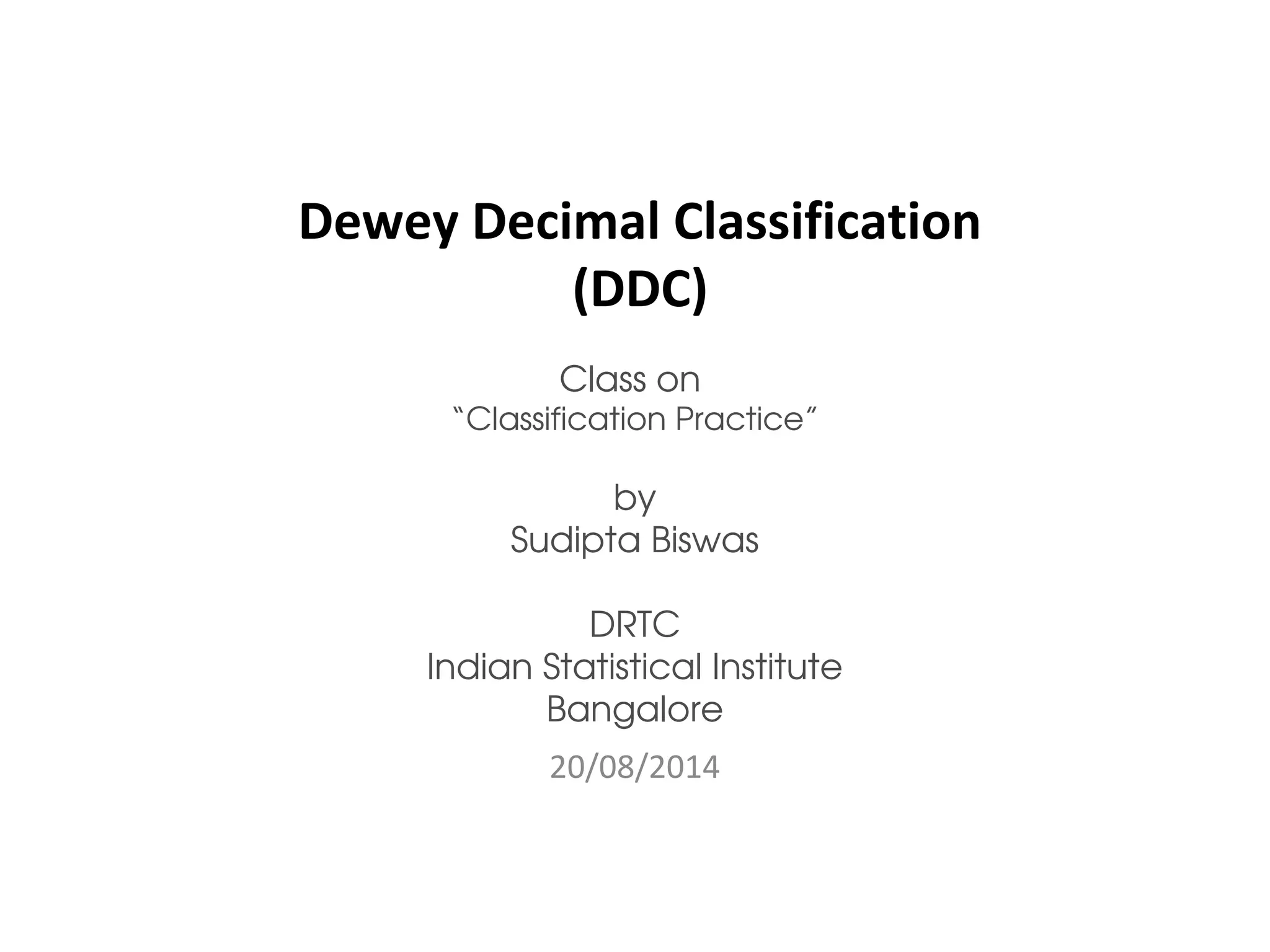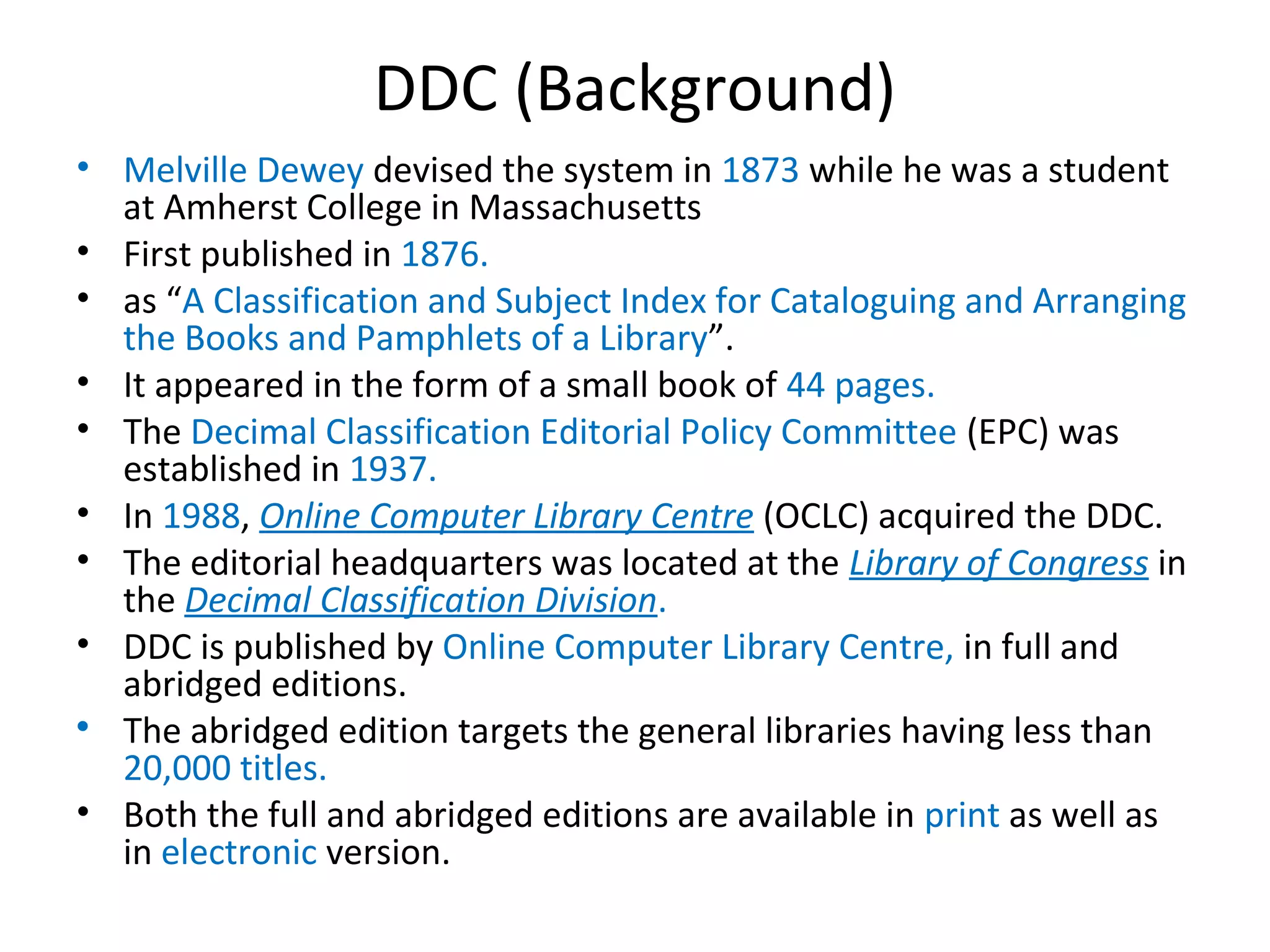The Dewey Decimal Classification (DDC) system, created by Melville Dewey in 1873, is the most widely used library classification system globally, adopted by over 135 countries and translated into more than 30 languages. It organizes knowledge into ten main categories, allowing for efficient categorization and accessibility of books by subject. The 22nd edition includes detailed guides, schedules, and indexing features to support users in navigating the system.


















